2x Multivit for Him in 90 capsules
✔ 18 active ingredients
✔ With magnesium and zinc
✔ Contains maca root extract
✔ Magnesium helps reduce the feeling of tiredness and fatigue [1]
✔ Tested in an Accredited Laboratory
✔ Easy to swallow capsules
Certified plant:
✔ ISO22000
✔ ISO9001
ESSENSEY MULTIVIT FOR HIM dietary supplement contains magnesium, which helps reduce the feeling of tiredness and fatigue, and zinc, which helps maintain the proper level of testosterone in the blood [1]
• the product contains 18 active ingredients
• contains magnesium, zinc, L-arginine, taurine and D-aspartic acid
• contains 100 mg of maca root extract per daily portion
• magnesium helps reduce the feeling of tiredness and fatigue, and zinc helps maintain the proper level of testosterone in the blood [1]
ESSENSEY dietary supplement contains active ingredients that, when taken regularly:
-Magnesium helps reduce the feeling of tiredness and fatigue [1]
-Zinc helps maintain normal testosterone levels in the blood [1]
-Vitamin B6 and B12, zinc and vitamin C help in the proper functioning of the immune system [1]
-Vitamin D and magnesium help in the proper functioning of muscles [1]
Nutritional value/Nutritional information: per 2 caps.
- L-arginine: 250 mg
- Taurine: 100 mg
- D-Aspartic Acid (DAA): 100 mg
- Maca Root Extract (Lepidium meyenii) [4:1]: 100 mg
- Magnesium: 100 mg
- Vitamin C: 80 mg
- Pantothenic acid: 3 mg
- Vitamin B6: 0.7 mg
- Riboflavin (vitamin B2): 0.7 mg
- Thiamine (vitamin B1): 0.55 mg
- Vitamin A (µg RE): 400 µg
- Folic acid: 100 µg
- Biotin: 25µg
- Vitamin D: 2.5 µg
- Vitamin B12: 1.25 µg
Ingredients: L-arginine HCl, capsule shell [glazing agent (hydroxypropylmethylcellulose)], magnesium (magnesium oxide), taurine, D-aspartic acid, maca root extract (Lepidium meyenii) [4:1], vitamins [vitamin C (L-ascorbic acid), maltodextrin, niacin (nicotinamide), vitamin E (DL-alpha-tocopheryl acetate), pantothenic acid (calcium D-pantothenate), vitamin B6 (pyridoxine hydrochloride), riboflavin, thiamine (thiamine mononitrate), vitamin A (retinyl acetate), folic acid (pteroylmnoglutamic acid), biotin (D-biotin), vitamin D (cholecalciferol), vitamin B12 (cyanocobalamin)], zinc (zinc oxide), anti-caking (magnesium salts of fatty acids).
The product may contain milk, soy, cereals containing gluten, eggs, fish, peanuts and nuts.
Directions: Take 2 capsules daily with sufficient water, preferably with a meal. Do not use for longer than 3 months.
Vitamin B1
It is also known as thiamine, the first discovered vitamin, isolated from rice bran in 1912 by Polish biochemist Kazimierz Funk. [3] It has many functions in the body – it helps in the proper functioning of the heart and nervous system, supports energy metabolism and proper psychological functions. [1]
Vitamin B2
It is also called riboflavin. It was first isolated in 1933 from yeast, egg white and milk whey. [3] Rich dietary sources of riboflavin include dairy products, eggs, mushrooms, parsley, wheat and beef. [3] Vitamin B2 helps reduce tiredness and fatigue, supports proper vision and helps protect cells from oxidative stress. [1]
Vitamin B3
Its other names are vitamin PP and niacin. Good dietary sources of niacin are peanuts, peppers, veal, rabbit meat and fish. [3] Vitamin B3 supports the functioning of the nervous system and helps reduce tiredness and fatigue. [1]
Vitamin B5
It is also called pantothenic acid. Vitamin B5 was isolated in 1931 during research on factors causing yeast growth. [3] Pantothenic acid supports energy metabolism and mental performance and may contribute to reducing tiredness and fatigue. [1]
Vitamin B6
It is commonly referred to as pyridoxine. It is a vitamin that takes part in over 150 biochemical reactions in the human body.[4] Vitamin B6 contributes to the regulation of hormonal activity, helps maintain normal psychological functions, supports the immune system and the proper production of red blood cells.[1]
Folic acid
Folic acid (also known as vitamin B9) and its derivatives belong to the group of folates. These compounds are characterized by similar biological activity, but folic acid is the most stable and best absorbed compound from this group. [5] Folic acid helps reduce the feeling of fatigue and supports the proper functioning of the immune system. [1]
Vitamin B12
It is commonly referred to as cobalamin. Products rich in vitamin B12 include ruminant meat, poultry, fish, crustaceans, milk, eggs, offal, and cheese. [6] Vitamin B12 helps reduce the feeling of tiredness and fatigue, supports proper energy metabolism, and helps in the functioning of the immune system. [1]
Biotin
It is also commonly called vitamin B7 or H. It is found in many food products, such as egg yolk, leafy vegetables, fish, tomatoes, almonds, and cheese. [7] Biotin supports the functioning of the nervous system, supports the proper metabolism of macronutrients, and contributes to maintaining the proper condition of the skin and hair. [1]
Vitamin C
It is also called ascorbic acid and is classified as a water-soluble vitamin. It has a multifaceted, positive effect on the human body. [8] Vitamin C helps reduce fatigue and tiredness, supports the functioning of the nervous system and supports the immune system. [1]
Vitamin E
Vitamin E is classified as an antioxidant – it helps protect cells from oxidative stress. [1] It is a fat-soluble vitamin and occurs naturally in vegetable oils, fish, wheat germ, whole grains and seeds. [9]
Vitamin A
It is a fat-soluble vitamin. It is found in fatty fish, liver, dairy products and eggs. Its precursors are carotenoids, which are found in vegetables and fruits. [10] Vitamin A supports proper iron metabolism, vision and the functioning of the immune system. [1]
Vitamin D
Vitamin D occurs as vitamin D2 (ergocalciferol) and D3 (cholecalciferol). Vitamin D2 is found mainly in plant products, and D3 in animal products – fatty sea fish, fish oils, eggs or liver. It can also be synthesized in the skin during exposure to sunlight. However, this synthesis is often insufficient in our latitude. [11] Vitamin D supports the immune system and contributes to the proper functioning of muscles, bones and teeth. [1]
L-arginine
L-arginine is an alkaline amino acid that is classified as a relatively exogenous amino acid, meaning that the body of a healthy adult can produce enough of it to meet its daily requirements. It is also found in food, such as seafood, nuts, seeds, algae, and meat. [13] Arginine is an important substrate for the synthesis of nitric oxide, which is considered to be a substance with ergogenic properties, meaning that it affects the body’s performance. [13,14]
Maca Root Extract
Maca root comes from South America and contains numerous vitamins, minerals, and plant sterols. [2]
D-Aspartic Acid
DAA, or D-Aspartic acid, is an endogenous amino acid that is synthesized and metabolized in the human body.[16] DAA occurs in nervous and hormonal tissues, where it participates in many biochemical processes. D-Aspartic acid is, among other things, a neurotransmitter.[16]
Taurine
Taurine is an organic compound classified as a sulfur amino acid. It does not form bonds with other amino acids and for this reason occurs in the body mainly in a free state. [15] It is synthesized from another amino acid – cysteine. It is an endogenous compound, but in some physiological conditions its synthesis in the body may be insufficient, which is why it is necessary to provide taurine with the diet. [15] In food, it is mainly found in animal products: meat, fish and seafood. [15]
Magnesium
It is one of the most important ions that are needed for the proper functioning of the human body. It is a component of chlorophyll, which is why it is found in large quantities in green vegetables, legumes, nuts and cereals. [12] Magnesium supports electrolyte balance, helps maintain healthy bones, teeth and muscles, and also helps reduce the feeling of fatigue. [1]
Zinc
Zinc supports the immune system and helps maintain healthy bones, skin, hair and nails. [1] Additionally, it supports vision, supports maintaining normal testosterone levels in the blood, fertility and normal reproductive functions. [1]
1. COMMISSION REGULATION (EU) No 432/2012 of 16 May 2012 establishing a list of permitted health claims made on foods other than those referring to the reduction of disease risk and to children’s development and health
2. Ekiert, K., & Dochniak, M. (2015). Superfoods–an ideal dietary supplement or an unnecessary addition. Nursing and Public Health, 5(4), 401-408.
3. Gryszczyńska, Agnieszka. “B vitamins – natural sources, role in the body, effects of avitaminosis.” Postępy Fitoterapii 4/2009.
4. Stach, Kamilla, Wojciech Stach, and Katarzyna Augoff. “Vitamin B6 in health and disease.” Nutrients 13.9 (2021): 3229.
5. Cieślik, Ewa, and Anna Kościej. “Folic acid–occurrence and importance.” Problemy Higieny i Epidemiologii 93.1 (2012): 1-7.
6. Kosmider, A., and Katarzyna Czaczyk. “Vitamin B12-structure, biosynthesis, functions and determination methods.” Food Science Technology Quality 17.5 (2010): 17-32.
7. Kowalska, Aleksandra, Julia Bartkiewicz, and Katarzyna Dettlaff. “Biotin–facts and hopes.” Farm Pol 78.7 (2022): 403-411.
8. Janda, Katarzyna, Magdalena Kasprzak, and Jolanta Wolska. “Vitamin C–structure, properties, functions and occurrence.” Pom. J. Life Sci 61.4 (2015): 419-425.
9. Zielińska, Aleksandra, and Izabela Nowak. “Tocopherols and tocotrienols as vitamin E.” Chemik 68.7 (2014): 585-591.
10. Zaborska, A., J. Król, and A. Brodziak. “Vitamin A–functions and importance for humans.” Food Industry 69.7 (2015): 36-38.
11. Dittfeld, Anna, et al. “Multidirectional action of vitamin D.” Annales Academiae Medicae Silesiensis. Vol. 68. No. 1. Silesian Medical University in Katowice, 2014.
12. Karmańska, Aleksandra, Andrzej Stańczak, and Bolesław Karwowski. “Magnesium – current state of knowledge.” Bromatologia i Chemistry Toxicologiczna 4 (2015): 677-689.
13. Wu G, Bazer FW, Davis TA, Kim SW, Li P, Marc Rhoads J, Carey Satterfield M, Smith SB, Spencer TE, Yin Y. Arginine metabolism and nutrition in growth, health and disease. Amino Acids. 2009 May;37(1):153-68.
14. Durkalec-Michalski K., Jeszka J. Is arginine supplementation an effective method of supporting exercise capacity in sports? Scientific Papers of the Wielkopolska University of Tourism and Management in Poznań 2011; 6: 101–110.
15. Dziewiecka, Hanna, Anna Kasperska, and Agnieszka Zembroń-Łacny. “USE OF SULFUR COMPOUNDS IN SPORT; BIOTIN, THIAMINE AND TAURINE.” (2010).
16. Topo E et al. The role and molecular mechanism of D-aspartic acid in the release and synthesis of LH and testosterone in humans and rats. Reprod Biol Endocrinol. 2009 Oct 27;7:120.


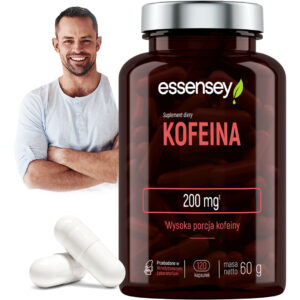
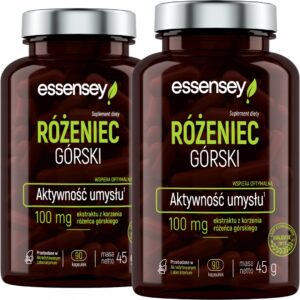
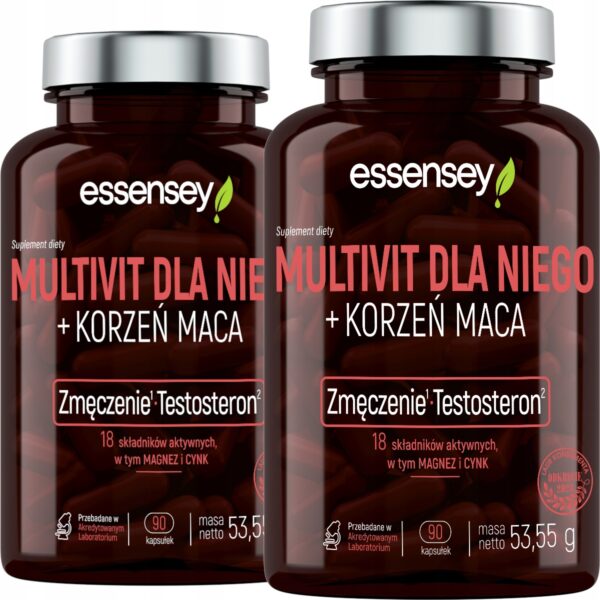

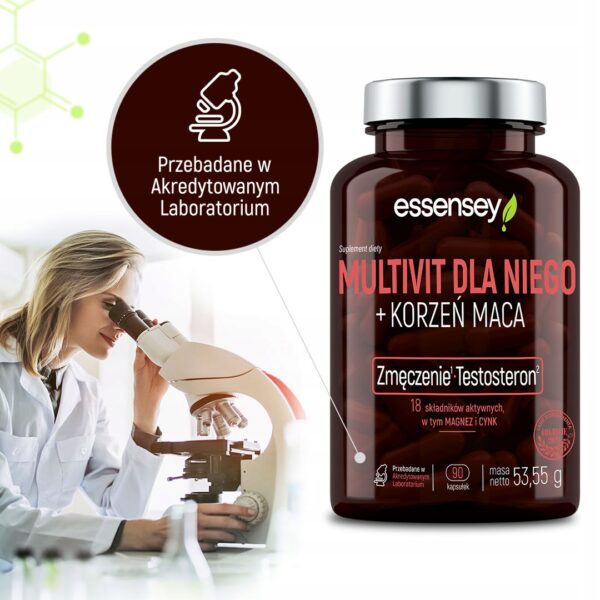

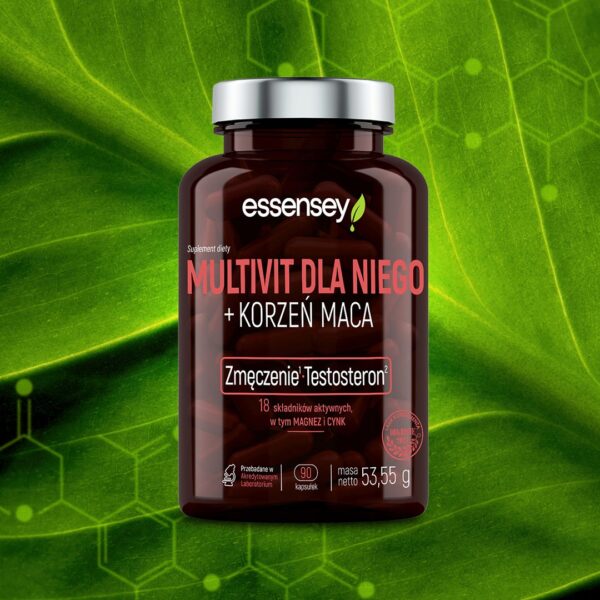
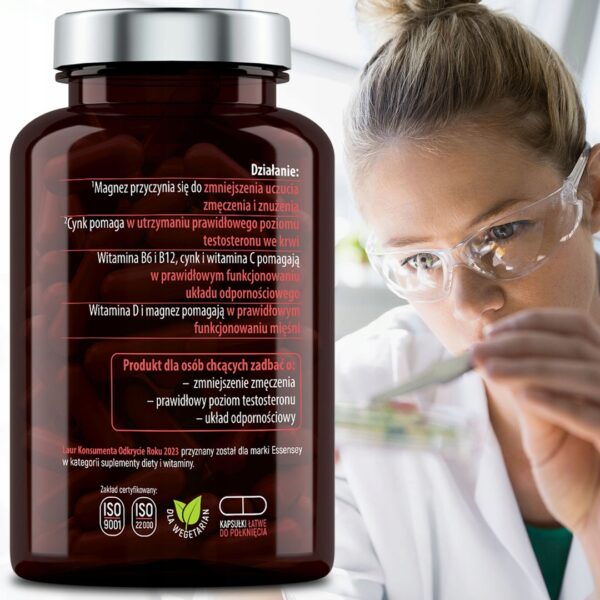
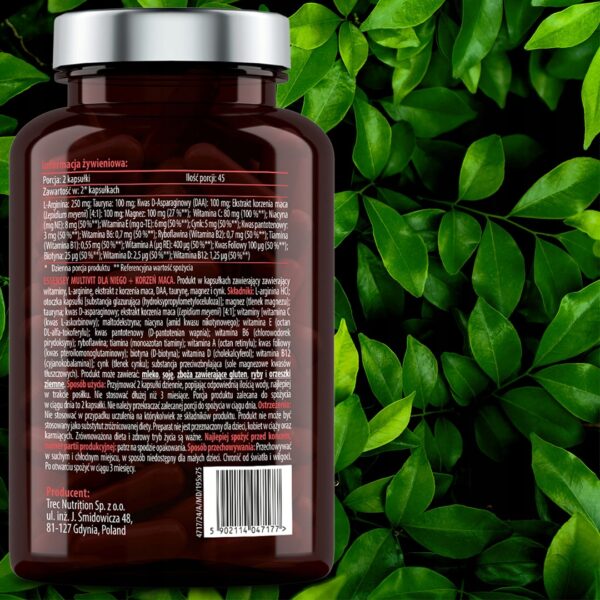



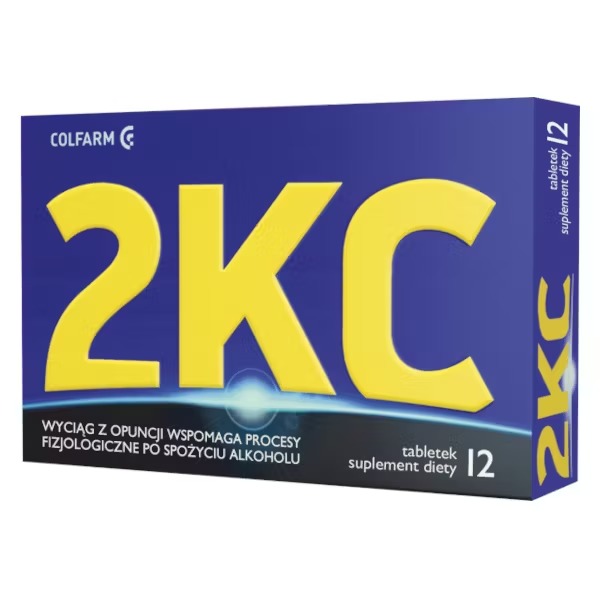
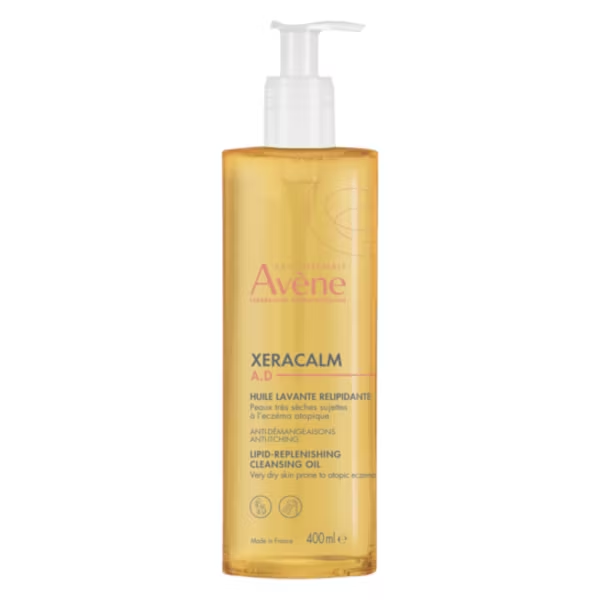














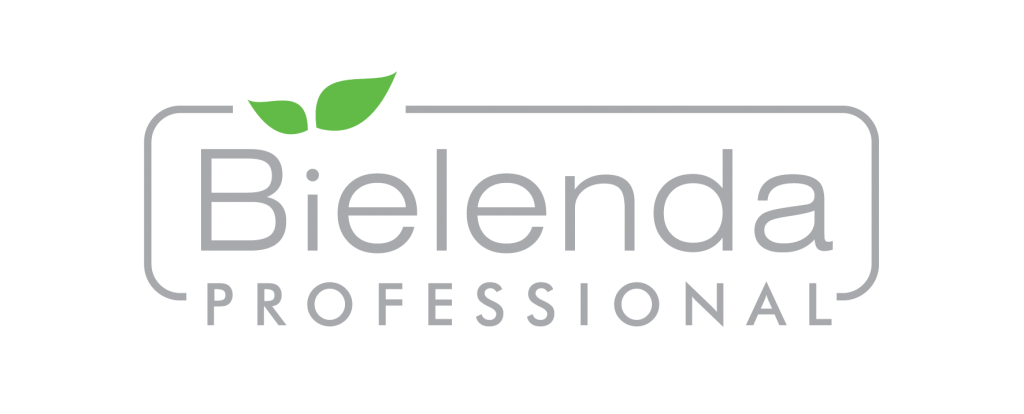













Reviews
Clear filtersThere are no reviews yet.